
Usagi Tsukino, better known as Sailor Moon, is a Japanese superheroine and the protagonist of the Sailor Moon franchise created by Naoko Takeuchi. She is introduced in chapter No. 1 of the manga, "Usagi – Sailor Moon", as a carefree Japanese schoolgirl who can transform into the magical "Guardian of Love and Justice", Sailor Moon.

Love Hina is a Japanese manga series written and illustrated by Ken Akamatsu. It was serialized in Kodansha's Weekly Shōnen Magazine from October 1998 to October 2001, with the chapters collected into 14 tankōbon volumes by Kodansha. The series tells the story of Keitarō Urashima and his attempts to find the girl with whom he made a childhood promise to enter the University of Tokyo. The manga was licensed for an English-language release in North America and the United Kingdom by Tokyopop, in Australia by Madman Entertainment, and in Singapore by Chuang Yi. Two novelizations of Love Hina, written by two anime series screenwriters, were also released in Japan by Kodansha. Both novels were later released in North America and the United Kingdom by Tokyopop.

A.I. Love You is a Japanese manga series by author Ken Akamatsu. The story follows Hitoshi Kōbe, a high school boy who isn't good at anything but programming. He creates a program in particular named Program 30 which is that of a female, and is shocked when she comes to life in the real world due to a lightning storm. Hitoshi names her Saati and teaches her about the real world, while she instructs him on how to properly have a girlfriend. Things get more complex however when two more of Hitoshi's programs come to life, and a hacker goes after Saati's program. A.I. Love You was first serialized through Weekly Shōnen Magazine in 1994, but later moved to Magazine Special where it ended in 1997. The series was collected into nine manga volumes that Kodansha also released between 1994 and 1997. Two re-releases followed; however, each time a volume was deducted.

Paradise Kiss, also abbreviated to ParaKiss, is a Japanese manga series written and illustrated by Ai Yazawa. It appeared as a serial in Shodensha's fashion magazine Zipper from March 1999 to March 2003, with its chapters collected in five volumes. A 12-episode anime television series adaptation, produced by Aniplex and studio Madhouse, aired on Fuji TV's Noitamina programming block from October to December 2005.

.hack//Legend of the Twilight is a science fiction manga series written by Tatsuya Hamazaki and drawn by Rei Izumi. The twenty-two chapters of .hack//Legend of the Twilight appeared as a serial in the Japanese magazine Comptiq and published in three tankōbon by Kadokawa Shoten from July 2002 to April 2004. Set in a fictional MMORPG, The World, the series focuses on twins Rena and Shugo, who receive chibi avatars in the design of the legendary .hackers known as Kite and BlackRose. After Shugo is given the Twilight Bracelet by a mysterious girl, the two embark on a quest to find Aura and unravel the mystery of the Twilight Bracelet.
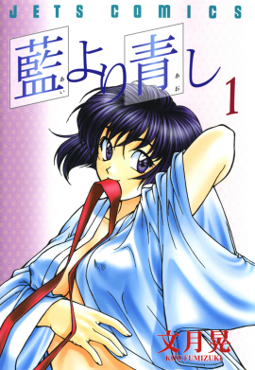
Ai Yori Aoshi is a Japanese manga series written and illustrated by Kou Fumizuki. The manga was serialized in Hakusensha's Young Animal magazine from 1998 to 2005 and the chapters collected into 17 tankōbon volumes. It is a love story between two characters who have not seen each other in years, but were once childhood friends.

The Demon Ororon is a Japanese manga series written and illustrated by Hakase Mizuki. The manga was licensed in North America by Tokyopop. The epilogue to the series, Empire of Midnight had six chapters released as of 2007.

Peach Fuzz is an original English-language manga written and illustrated by Lindsay Cibos and Jared Hodges. It was published in North America and the United Kingdom by Tokyopop in three volumes from January 11, 2005, to December 11, 2007. Peach Fuzz originally started as a short 17-page story in Tokyopop's 2nd Rising Stars of Manga competition, where it won the grand prize. The series also appeared in a Sunday comic strip form within Sunday newspaper comics sections. Peach Fuzz focuses on the relationship between a young girl and a ferret who believes herself to be a princess.

X-Day is a Japanese manga series written and illustrated by Setona Mizushiro. It was serialized in Princess magazine from March to November 2002 and published in two tankōbon volumes by Akita Shoten. Written in response to the Columbine High School massacre, the story follows three high school students and a teacher who meet online and plot to blow up their school.

Your and My Secret, known in Japan as Boku to Kanojo no Peke Mittsu, is a manga series by Ai Morinaga. The series was first published in Enix's Monthly Stencil in January 2001, was later obtained by Mag Garden who published it in Monthly Comic Blade then Monthly Comic Avarus where it concluded its serialization in August 2011. The individual chapters were collected and released into eight tankōbon volumes by Mag Garden. A continuation of the manga, subtitled as Extra-Part, was serialized in Mag Garden's online magazine, Web Comic Beat's, between June 2012 and March 2013; it was later released in a single tankōbon volume. In Japan, Boku to Kanojo no Peke Mittsu has been adapted into three radio dramas and a live action film. Your and My Secret follows the effeminate Akira Uehara who switches bodies with the tomboy Nanako Momoi due to an accident.
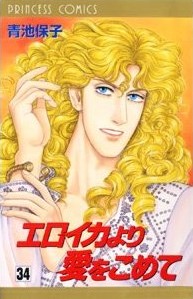
From Eroica with Love is a shōjo manga by Yasuko Aoike which originally began publication in 1976 by Akita Shoten. The series ran irregularly in the Japanese anthology magazine Viva Princess from December 1976 to April 1979, then moved to the sister publication Princess beginning in September 1979. It was featured regularly in Princess, with several later side stories appearing in Viva Princess, until August 1989. It went on hiatus for several years, then reappeared in Princess in May 1995 and ran irregularly through December 2007. As of January 2009, it is once again regularly featured in Princess Gold. The English translation by CMX began publication in 2004. It has also been translated to Chinese, as Romantic Hero, with 21 volumes, as well as to Thai, with 20 volumes.

Princess Princess is the title of a fictional series written and illustrated by Japanese author Mikiyo Tsuda about the lives of three high school boys and the school they attend. The series is contained within multiple media pieces which began as a manga first serialized in the manga magazine Wings starting in 2002. After the first manga series ended, a sequel entitled Princess Princess + started serialization in the same magazine in May 2006, and finished in January 2007. An anime has since been adapted from the manga and began airing in Japan on April 5, 2006, produced by the Japanese animation studio, Studio Deen. A live action adaptation called Princess Princess D aired in Japan from June 28, 2006, to September 13, 2006. Finally, a visual novel video game for the PlayStation 2 based on the series was released on October 26, 2006, in Japan.
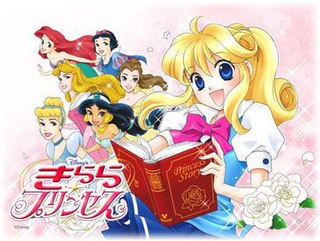
Kilala Princess, known in Japan as Disney's Kirara Princess, is a shōjo fantasy, romance, and adventure manga series written by Rika Tanaka and illustrated by Nao Kodaka. The first 15 chapters were serialized by Kōdansha in the monthly manga magazine Nakayoshi, while the last 8 chapters were serialized in the quarterly Nakayoshi Lovely. It was later collected in five bound volumes. It is about a young girl named Kilala and a lost Prince named Rei who join to find the "7th Princess" and save the kingdom of Paradiso. However, Kilala is not mentioned as a relevant member of the princesses in other later media.

Songs to Make You Smile, is a collection of five short romantic comedy stories written and illustrated by Natsuki Takaya, who also authored the shōjo manga series Fruits Basket. One chapter from the series was published in Hana to Yume on June 20, 1998, and the complete one-volume series was published by Hakusensha on November 19, 1999.
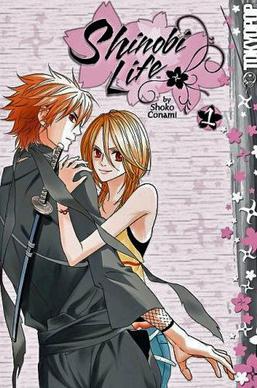
Shinobi Life is a Japanese romantic comedy manga series written and illustrated by Shoko Conami. It was serialized in Princess magazine from July 2006 to March 2012. The individual chapters were collected and published in thirteen tankōbon volumes by Akita Shoten. The manga was licensed for an English-language release by Tokyopop, which published seven volumes before shutting down in 2011. Akita Shoten completed the English translation and published the entire series digitally from 2018 to 2019.
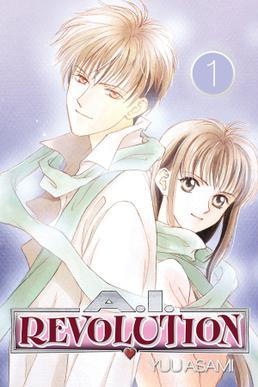
A.I. Revolution is a Japanese manga series written and illustrated by Yuu Asami. It was serialized in Princess magazine from 1994 to June 2003. The individual chapters were collected and published in 17 tankōbon volumes by Akita Shoten, with the first volume released in July 1995; the last volume was released in October 2003. The series was licensed for an English-language release by Go! Comi and for a Spanish-language release by Mangaline Comics.
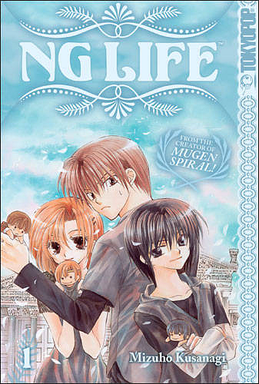
NG Life is a Japanese manga written and illustrated by Mizuho Kusanagi. It was serialized in Hakusensha's Hana to Yume from December 2005 to March 2009. The individual chapters were then encapsulated and released in nine tankōbon volumes. The series was licensed for an English-language release in North America by Tokyopop between 2008 up to 2011 when Tokyopop's North American publishing company was closed down.

Karakuri Odette is a Japanese shōjo manga by Julietta Suzuki that was serialized in the bi-weekly Japanese shōjo manga anthology Hana to Yume. Though Karakuri Odette is actually Suzuki's second series, it was awarded the "Outstand Debut" award in the 31st Hakusensha Athena Newcomers' Awards. The series's 35 chapters were compiled into 6 volumes by Hakusensha. The series is licensed for an English release in the United States and Canada by Tokyopop.

The Knockout Makers is a Japanese shōjo manga series written and illustrated by Kyoko Hashimoto. It was serialized in Akita Shoten's Princess magazine from December 6, 2003, to May 2, 2005, with its chapters collected into three tankōbon volumes published under the Princess Comics imprint. The series was licensed in English by Tokyopop, which published all three volumes in 2008; it went out-of-print when the company shut down its North American publishing division in 2011.

Konohana Kitan (このはな綺譚) is a Japanese manga series by Sakuya Amano. Originally published in Ichijinsha's yuri manga magazine Comic Yuri Hime S under the name Konohana-tei Kitan (此花亭奇譚) between 2009 and 2010 before going on hiatus, the series relaunched in Gentosha's seinen manga magazine Comic Birz in December 2014. The manga is licensed in English by Tokyopop. A 12-episode anime television series adaptation by Lerche aired in Japan between October and December 2017.




















